

Max Davies
2026 GWM Haval Jolion price and specs
7 Hours Ago
There's a lot riding on the shoulders of the all-new Land Rover Defender. Is it enough to stay true to the Defender name?

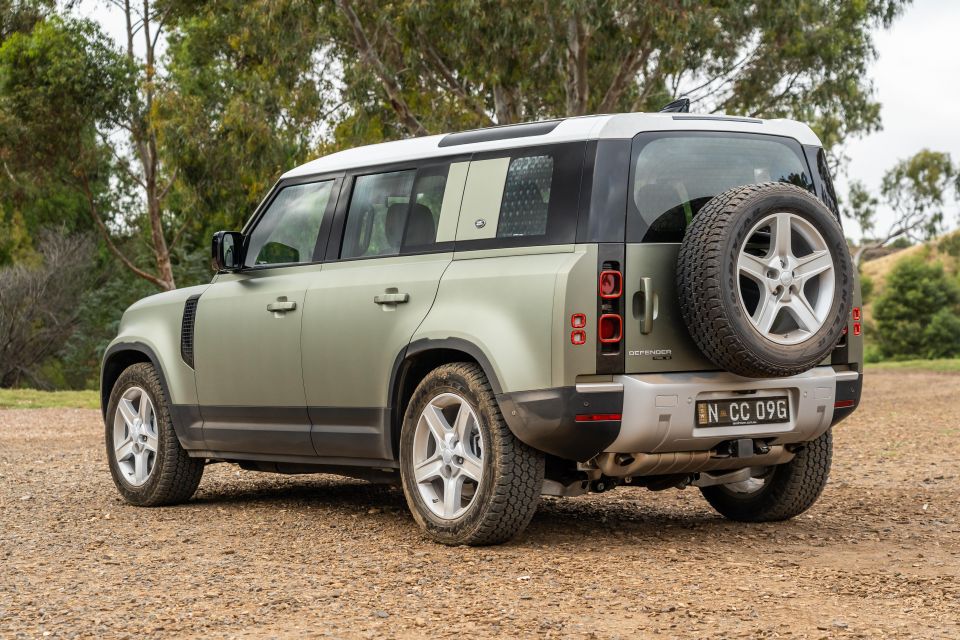

Founder
New from
$102,736
excl. on-roads

Founder
New from
$102,736
excl. on-roads


Founder
New from
$102,736
excl. on-roads

Founder
New from
$102,736
excl. on-roads
Quickly see how this car stacks up against its competition. Select any benchmark to see more details.
Where expert car reviews meet expert car buying – CarExpert gives you trusted advice, personalised service and real savings on your next new car.
Being tapped on the shoulder as the engineer in charge of creating a new Land Rover Defender would be both exciting and terrifying at the same time.
So much attention has been placed around the 2021 Land Rover Defender it couldn’t be anything less than excellent to satisfy the needs of its intended market (and its newfound price).
It was launched with great fanfare to an adoring audience at the 2019 Frankfurt motor show. I was standing there at the Land Rover stand when an adventurer climbed up a vertical wall, hopped into a Defender 90 and drove down a 45-degree descent towards the crowd.
It was a fitting way to reveal the all-new Defender and it was followed by pandemonium as everybody tried to get up close and personal with the cars on display.
At that point, we knew it could be something special.
So we’ve finally had the chance to get behind the wheel locally, do some light off-roading, and find out whether it lives up the revered Defender name.

Pricing for the 2021 Land Rover Defender range kicks off from $71,500 for the entry-level Defender 90 P300. The longer Defender 110 starts from $74,500 for the entry-level Defender 110 P300.
The model tested here, the Defender 110 P400 SE is priced from $98,290 before on-road costs. You can see a more detailed pricing and specification breakdown of the Defender 90 here, or the Defender 110 here.
There are 10 exterior colours to choose from, along with the ability to add a satin protective film (as seen on our Pangea Green test vehicle).
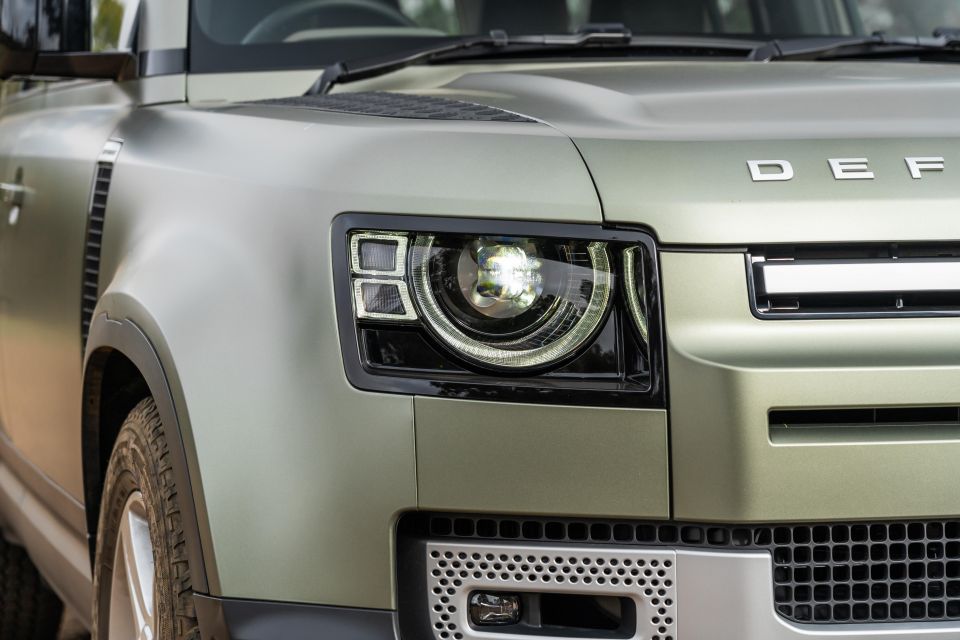
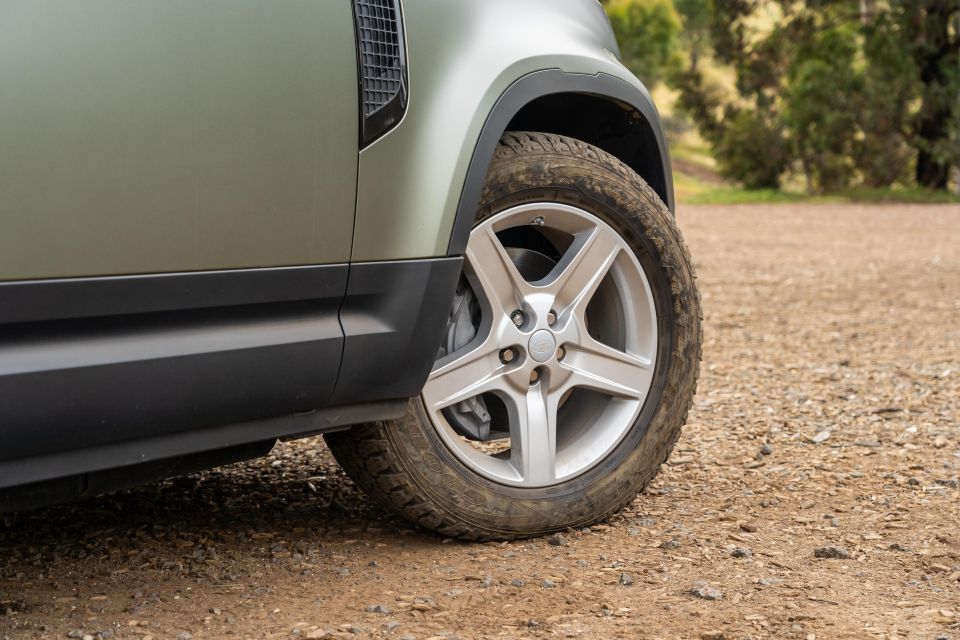
Buy your new car without the stress. It's fast, simple and completely free.

Great service from Travis and team, second time I have used this business would not hesitate to recommend them to anyone
Craig C.
Purchased a Ford Ranger in Sunshine Coast, QLD
CarExpert helped Craig save thousands on his Ford Ranger, now let us save you on your next new car.
Find a dealLand Rover has fitted the Defender with a generous amount of kit as standard.
Outside of the SE variant you’ll find 20-inch alloy wheels, LED headlights with LED daytime running lights, adaptive cruise control, air suspension, fog lights, automatic headlights and wipers, keyless entry with push-button start, and a full-sized spare wheel.
Inside the cabin there’s 12-way power front seat adjustment with memory, a Meridian-branded sound system, a digital rear-view mirror, electric steering column adjustment, a leather-wrapped steering wheel, a 12.3-inch digital instrument display, the 10.0-inch Pivi Pro infotainment system with Apple CarPlay and Android Auto, DAB+ radio, dual-zone climate control, and rubber flooring.
If you’d like to see a more detailed list of the standard inclusions, along with optional packs available, check out our 2021 Land Rover Defender pricing and specifications story.
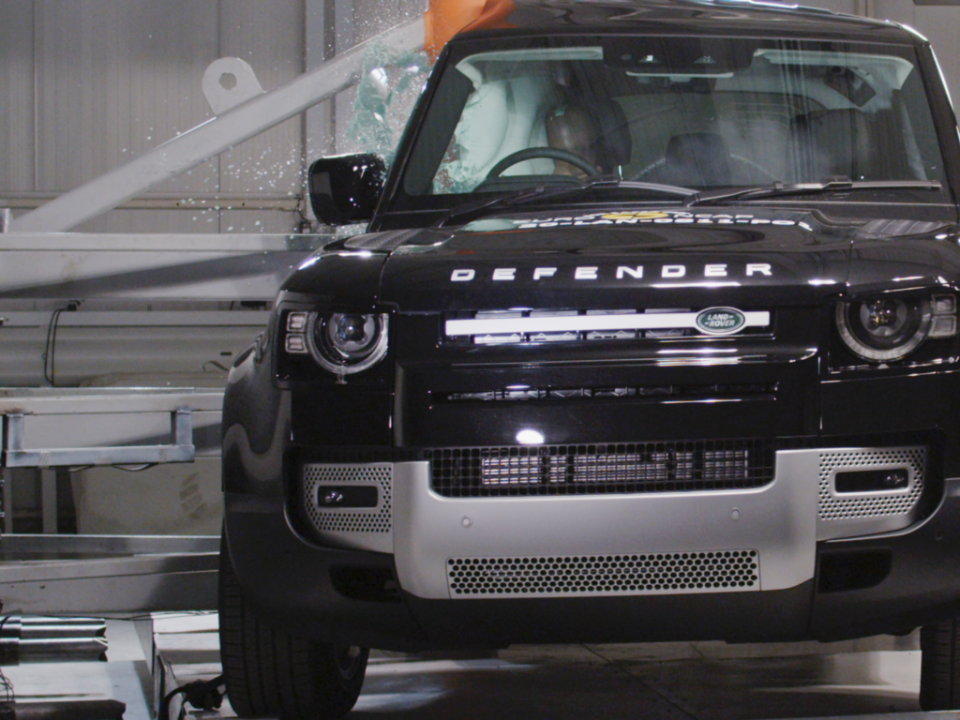
The Land Rover Defender has a five-star ANCAP safety rating. It scored 85 per cent for adult occupant protection, 88 per cent for child occupant protection, 71 per cent for vulnerable road user protection and 76 per cent for safety assist systems.
Standard for 2021 across the range is autonomous emergency braking, lane-keep assist blind-spot monitoring, adaptive cruise control, rear collision monitor and rear cross-traffic alert, and a clear exit monitor.
The Defender also comes equipped with dual frontal, side-chest for the first row and side curtain airbags for both the first, second and optional third row, as well as tyre pressure monitoring, seatbelt reminders, and ISOFIX mounts for the two outboard rear seats.
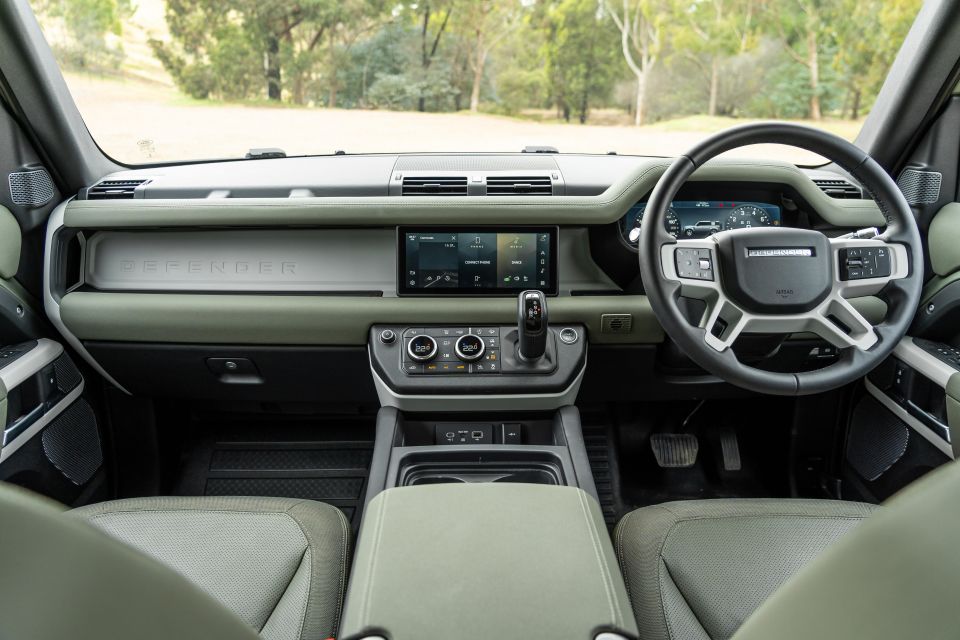
If you thought the exterior design was out there and polarising, just wait until you see the interior.
The first thing you notice is the rubber floors throughout the cabin. Instead of carpet (which can be optioned in) the floors are designed to be easy to clean and wash out when required.
Next you’ll notice getting in and out is easy thanks to the exit height setting, which automatically lowers and locks the vehicle into its lower ride height for entry and exit. It makes stepping into the cabin a piece of cake and doesn’t make it feel like you need to climb up into it like you do in other big SUVs.
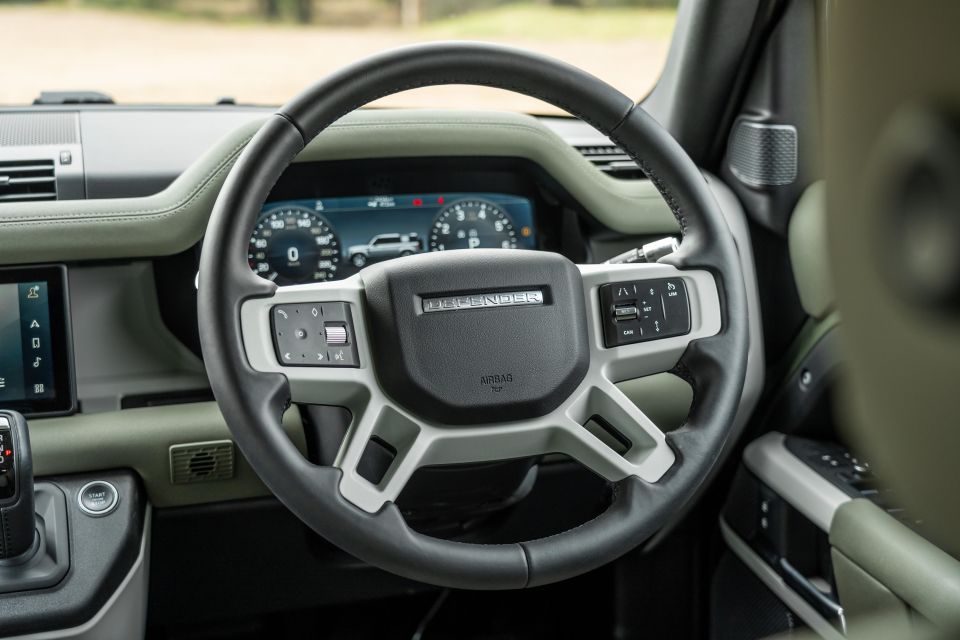
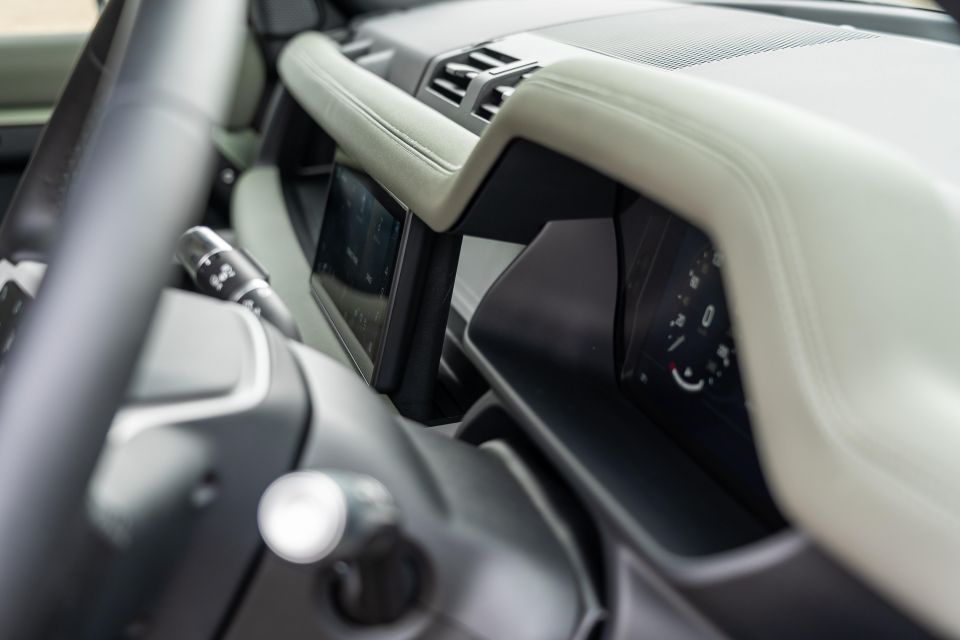
Throughout the cabin Land Rover has ditched traditional materials and instead opted for fabrics across the dashboard and doors, along with an exposed magnesium body member across the dashboard and exposed rivets in the doors.
The interior is unlike that of any other car on the road and the length Land Rover has gone to in the finer details absolutely shows.
Storage was clearly a priority for the designers. Generous bins inside the doors hold bottles and other odds and ends, behind the infotainment screen there’s a rubber-based storage area which continues along the length of the dashboard, and the centre console can be optioned with a fridge to keep drinks cool.
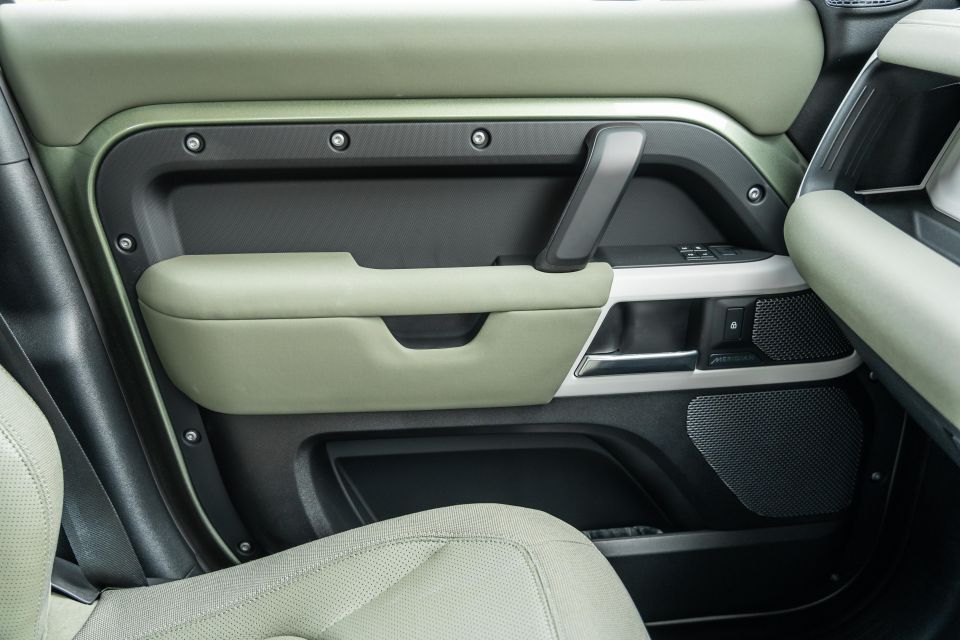
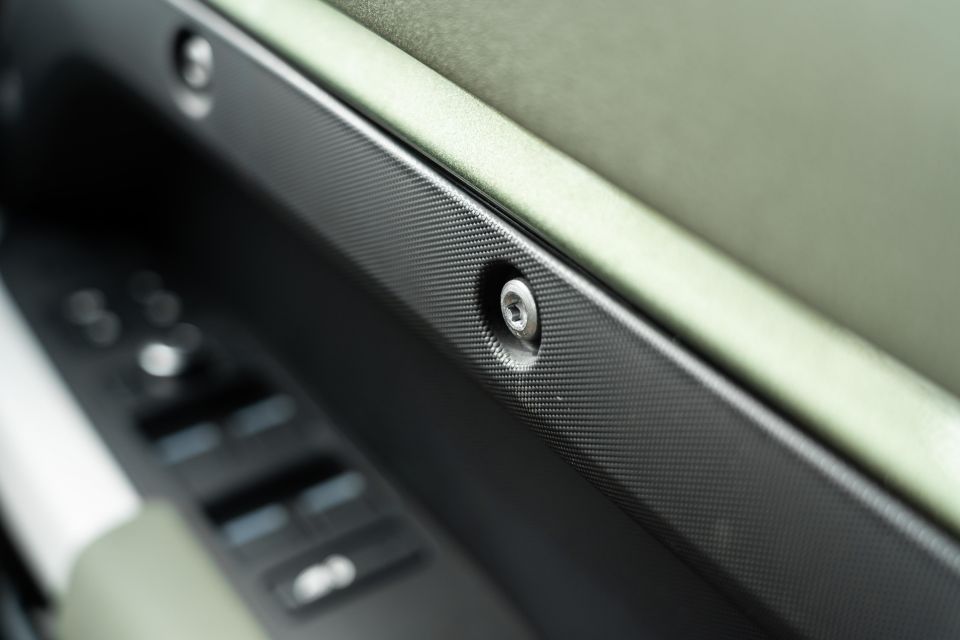
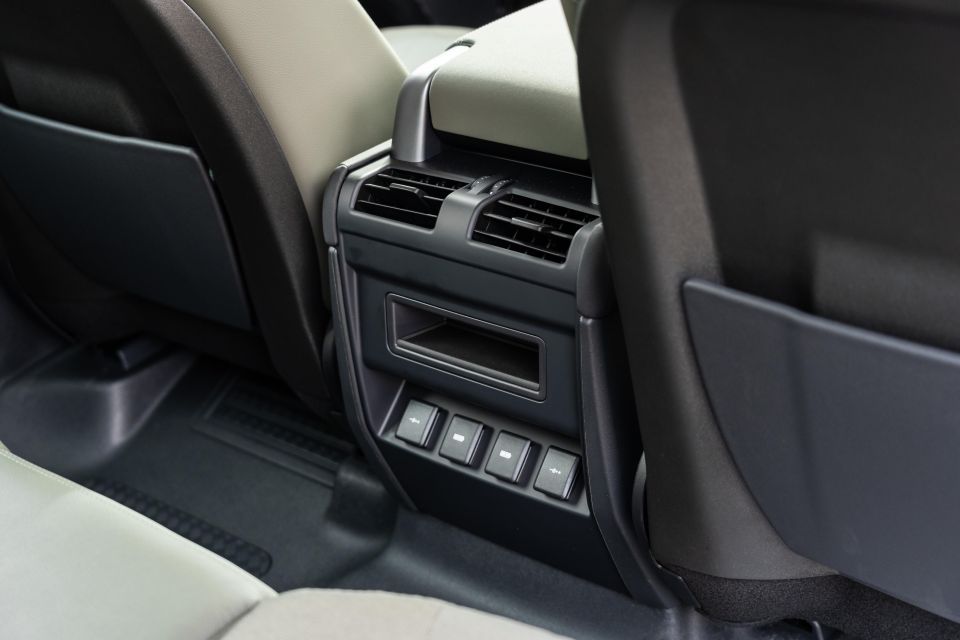
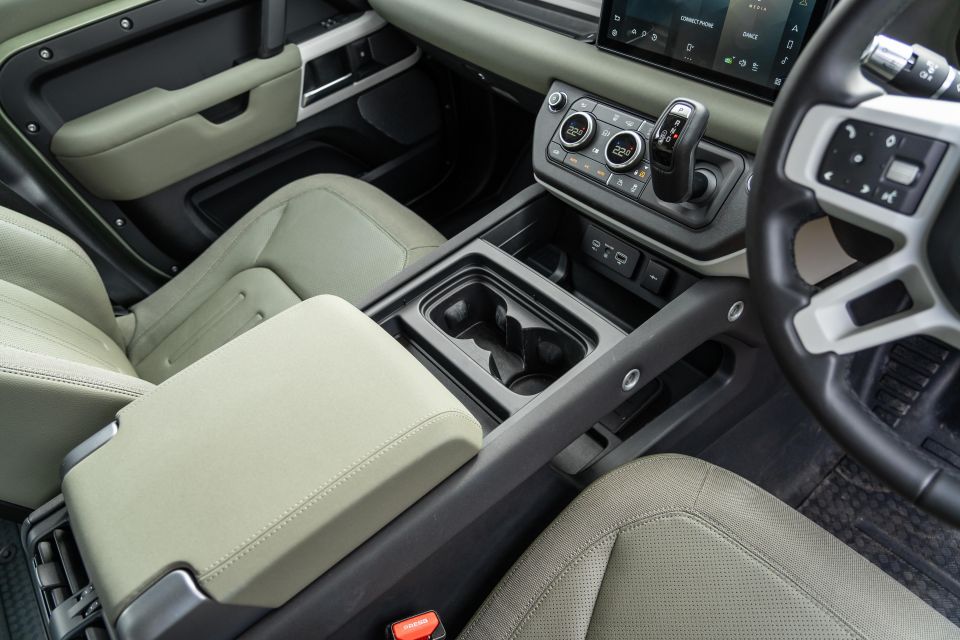
There’s more storage beneath the two cup holders and a litany of connectivity options. In addition to USB-A and USB-C ports, the car also has an inbuilt 5G modem that supports over-the-air updates, along with the ability to connect to external devices like a satellite phone for remote software updates.
Seating in the first row is comfortable, but we would have loved to see more bottom support. The base of the seat is quite flat and doesn’t offer enough support when going around corners or even when getting thrown around the cabin while off-roading.
The second row offers plenty of leg- and headroom with ample space for an adult to get comfortable and stretch out. A centre armrest offers two cup holders and acts as a divider between the two outboard seats.
You’ll find ISOFIX points for the outer seats in the second row as well as top-tether points on all three positions on the rear bench.
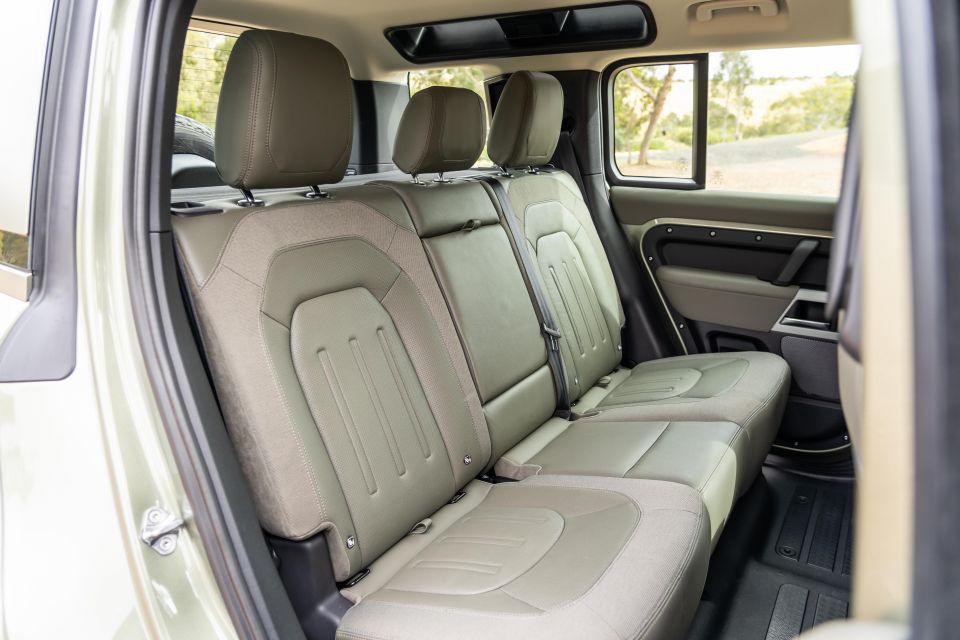
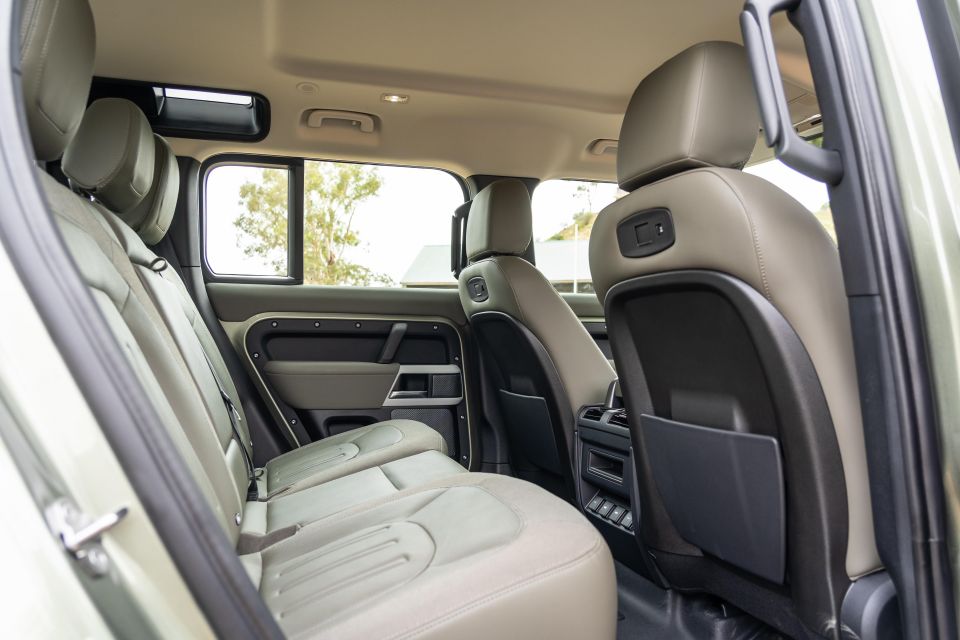
While a third row of seating is available as an option, our test vehicle was fitted with five seats. That means you get 1075 litres of cargo space with the second row in place, which expands to 2380 litres with the second row folded.
There’s a clever system in place to increase usability of the space too. While dropping the second row offers an almost flat floor, the seat bases in the second row can be pulled forward to allow the second row to fold completely flat, which opens up a van-like cargo area.
The base of the cargo floor can also be removed and used as a staging area for removing mud before hopping in the car. It can later be hosed off and cleaned before being returned into its position. There’s also a set of buttons to further lower the rear suspension for easier cargo access.
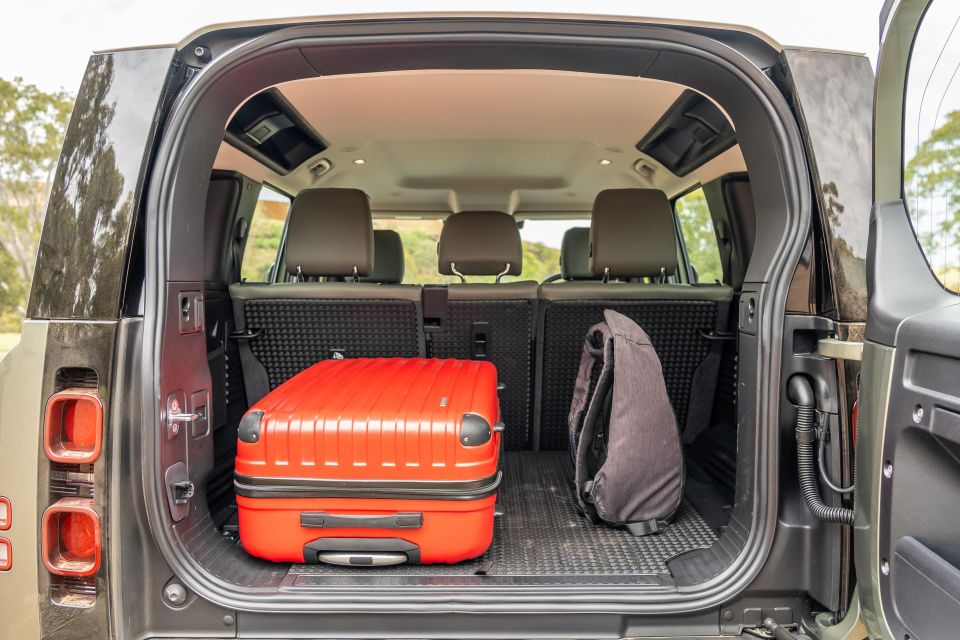
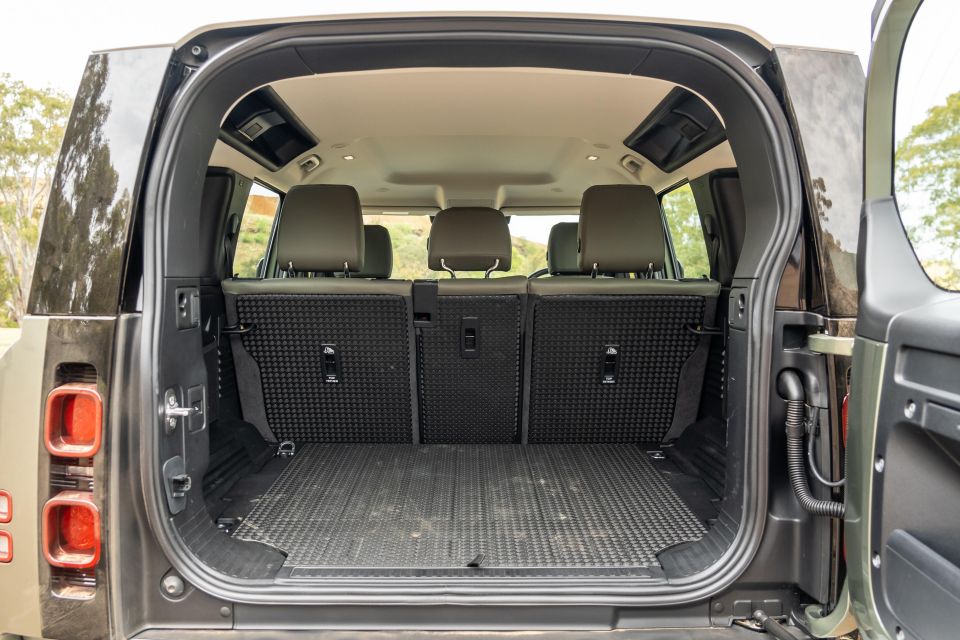
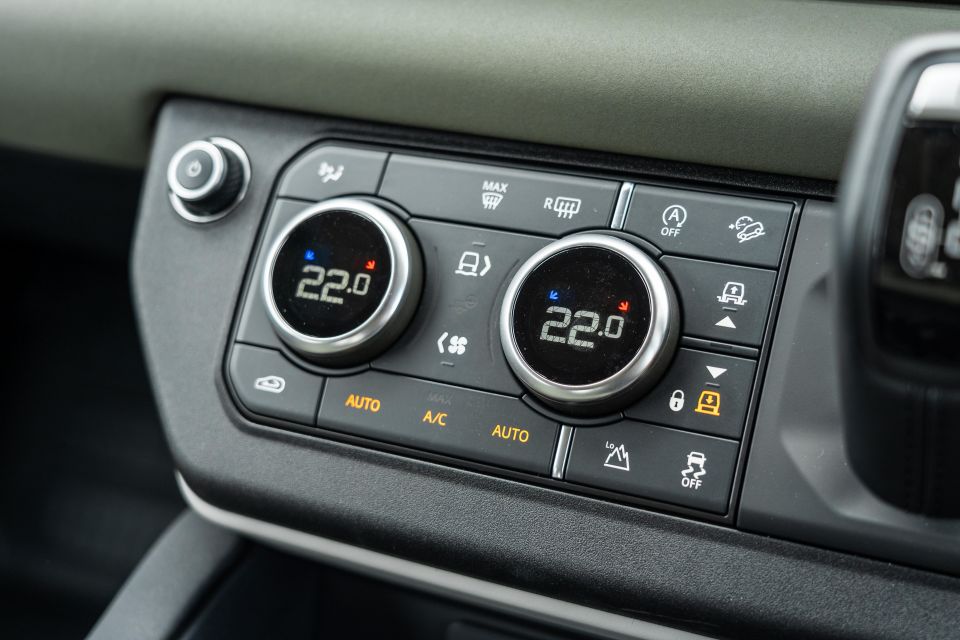
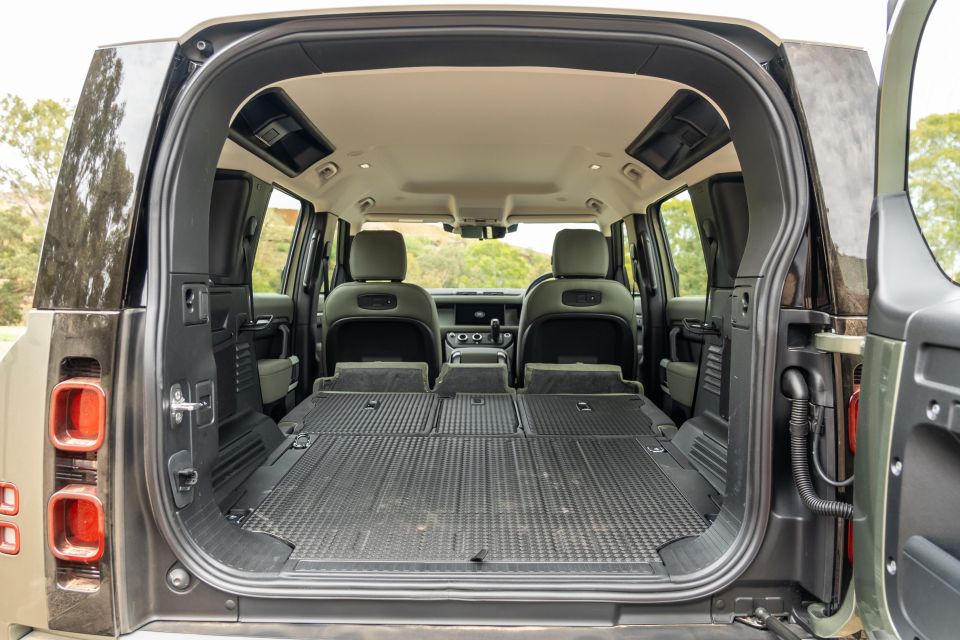
Despite the cargo space being fairly cavernous, the Defender’s design offers a fairly narrow load area. It’s further compromised by a tailgate door that swings open, meaning you won’t be able to park up against any walls if you want access to the cargo area.
Let’s talk about the infotainment system. It measures 10.0-inches and Land Rover calls this new infotainment system ‘Pivi Pro’. Unlike the previous generation of InControl Touch Pro, Pivi Pro is an ‘always on’ system.
That means you don’t need to wait for it to boot up, and do things like enter navigation addresses and make phone calls almost immediately after entering the vehicle.
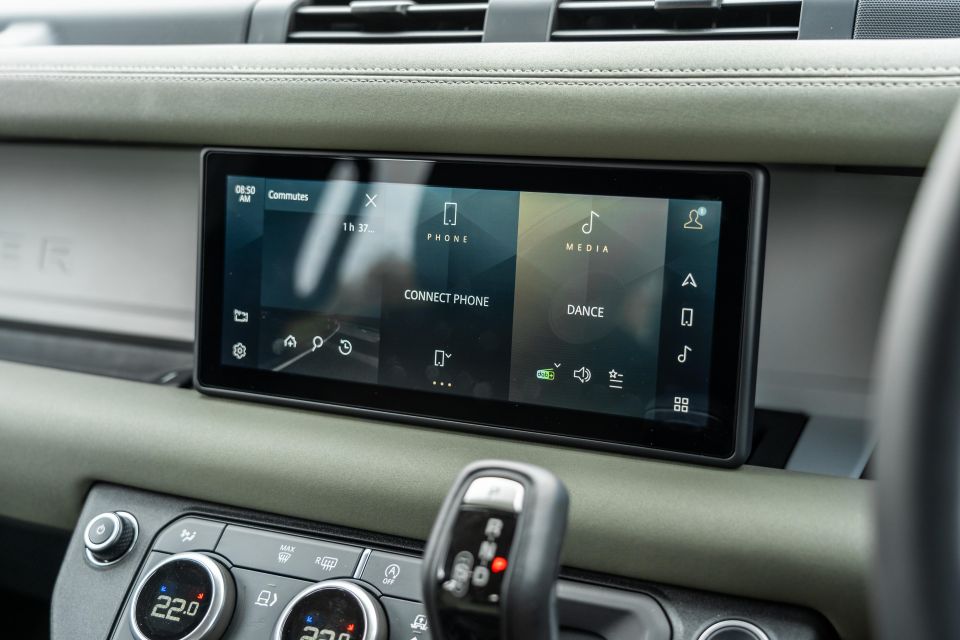
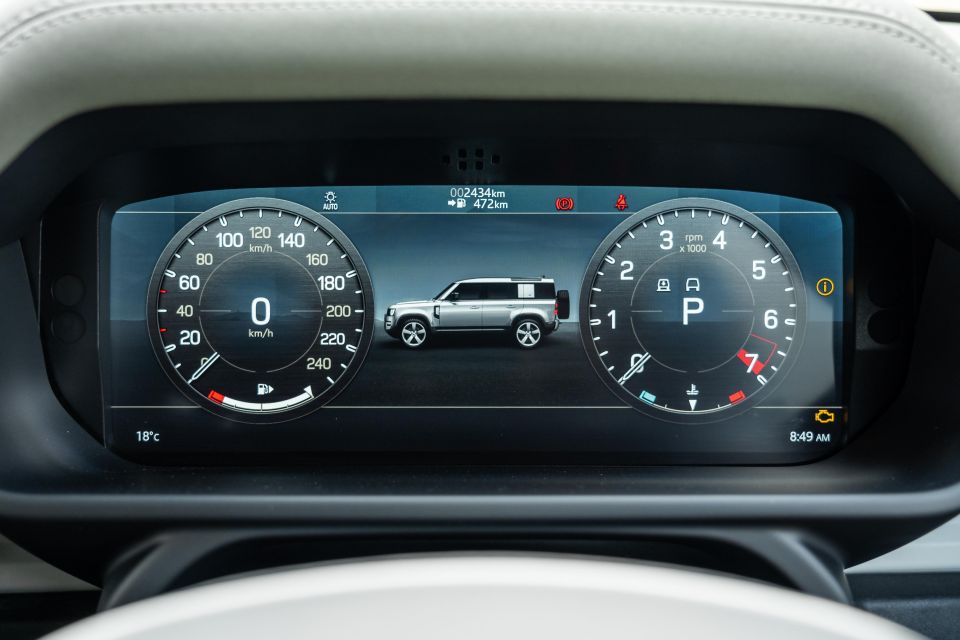
It’s super fast too. It was hard to catch the system out and it’s a big leap forward over InControl Touch Pro. It comes with wired Apple CarPlay and Android Auto as well to further improve functionality.
It’s also the base for the vehicle’s over-the-air updates. During our time with the car an update was deployed and we were able to apply it to the car by accepting the update and letting the car sit for around 40 minutes while it was installed.
We’re a big fan of this new infotainment system and look forward to it being rolled out across the Jaguar and Land Rover range in the coming months.
One last thing worth pointing out, which I loved, was the piece of glass built into the roof above the third row. It’s a throwback to the original Defender, which had that piece integrated above the second row.
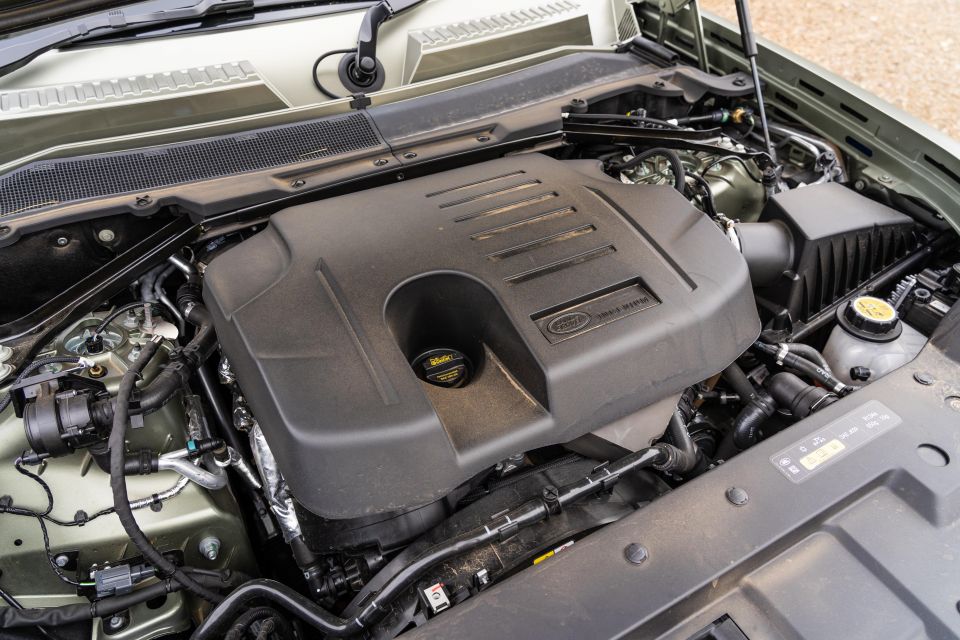
Powering the Defender P400 is a 3.0-litre turbocharged six-cylinder petrol engine with 48-Volt mild-hybrid technology.
The engine produces 294kW of power and 550Nm of torque and is mated to an eight-speed automatic transmission with a high- and low-range transfer case. It’s capable of a 0-100km/h dash in a hot hatch-like 6.1 seconds.
The mild-hybrid portion of the engine is a motor-generator that is used to capture kinetic energy when decelerating that would otherwise be wasted as friction in the mechanical braking system. This captured energy is stored within the 48V system’s battery.
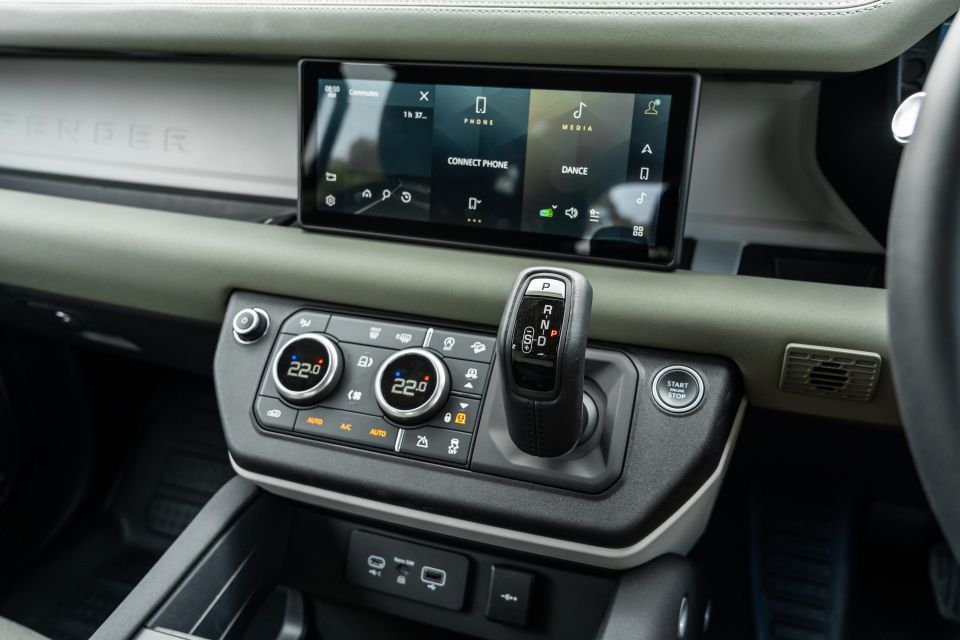
This integrated motor-generator features a starter motor that can efficiently and continuously stop and start the car seamlessly. Energy captured can also be used to help with propulsion as the vehicle sets off from a standing start.
There’s also an electric supercharger that’s able to pre-charge the turbocharger before it comes on boost.
Land Rover claims a combined fuel economy of 9.9 litres of fuel per 100km. After driving over a mix of city and highway roads, along with some off-road driving, that figure settled closer to 15.0L/100km.
Given the Defender weighs just under 2300kg, the six-cylinder engine is working hard to move that mass around.
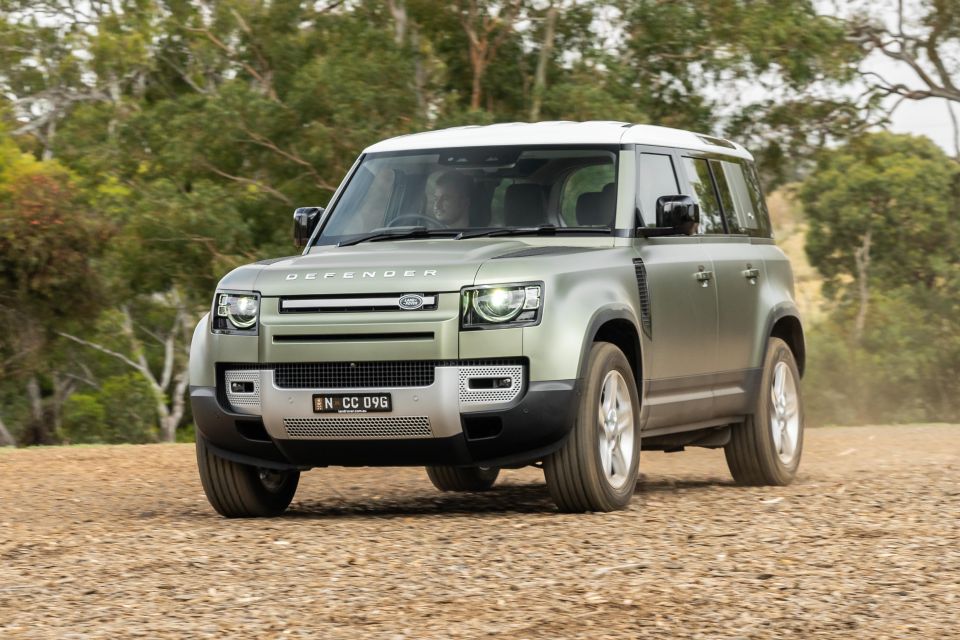
Traditionally, you wouldn’t even dream of a turbocharged petrol engine in an SUV this size. But Land Rover is fairly confident the ‘Ingenium’ P400 six-cylinder petrol solely offered with the Defender currently brings decent fuel economy plus the punch you come to expect from a turbo petrol engine.
On start it’s quiet and even though the current crop of Land Rover diesel engines aren’t that noisy, it provides a level of refinement that you may not find with a diesel.
In and around town it’s a highly responsive engine, and thanks to the 48V mild-hybrid system it feels spritely off the line. We didn’t love the stop/start system in conjunction with auto hold function. It can sometimes feel jerky and unrefined as it sets off, which takes some of the polish off the inline six.
Once the road opens up the engine is very eager to please with a high-revving character and torque-laden power band. It always feels ready to react and the smooth eight-speed automatic transmission is rarely caught napping.
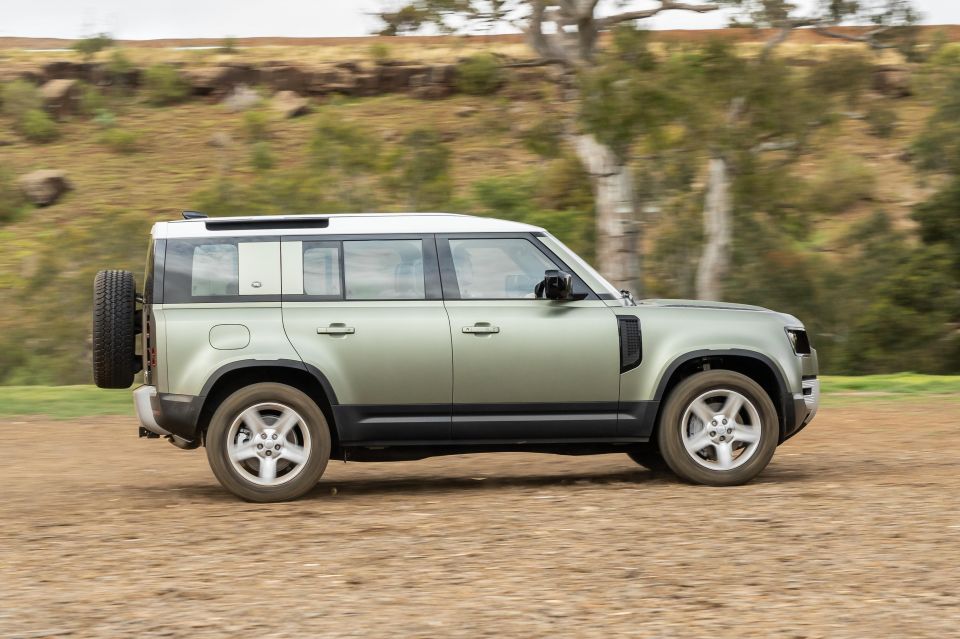
Where expert car reviews meet expert car buying – CarExpert gives you trusted advice, personalised service and real savings on your next new car.
It’s able to lean on its torque band in most situations and if you really get stuck into it, the performance offered in return is smile inducing. A 0-100km/h time of just over six seconds gives you an idea of how quick it is if you get enthusiastic with the loud pedal.
While the performance is pleasing, the fuel economy isn’t. It started off okay, but as we did more low-speed driving the fuel economy started going downhill. It eventually settled at around 15.0L/100km after a mix of city, highway and off-road driving.
The new six-cylinder diesel may be a better option if you’re going to be spending more time around the city. But the petrol would be equally as good as the diesel if you’re looking to take advantage of the 3500kg braked towing capacity.
What is unanimously impressive though, is the ride comfort. Normally with vehicles like this they’re either off-road focussed and comfortable, but terrible at handling, or they are excellent at handling, but not great for off-road driving.
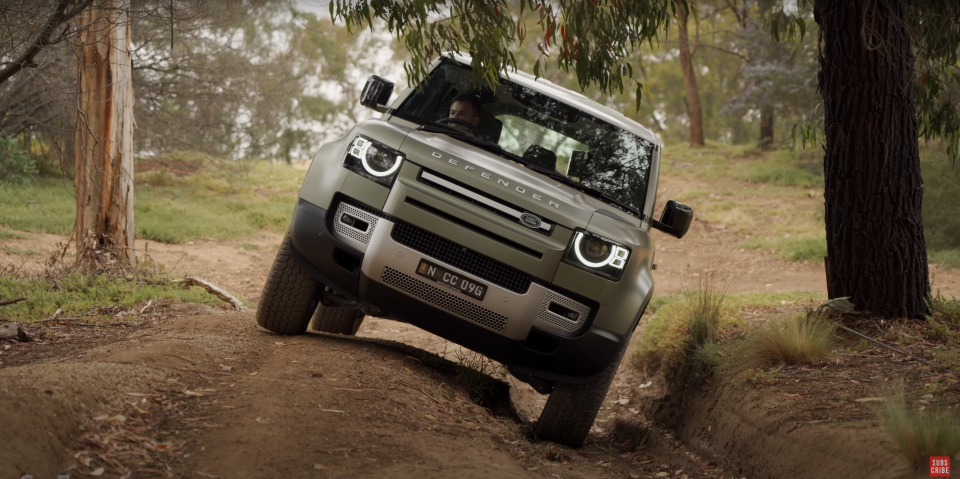
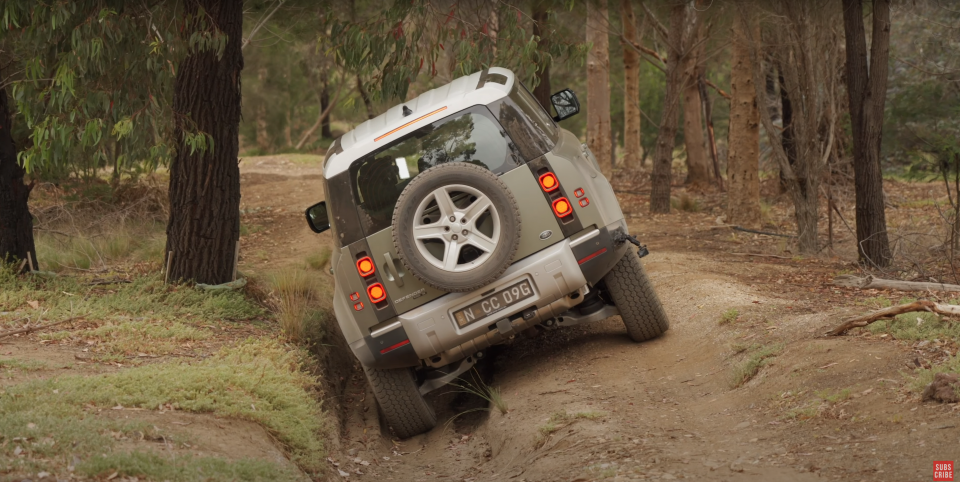
As you’ll read shortly, the Defender is not only incredibly comfortable in and around the city and on poor quality country roads, but it manages to utilise the flexibility of its air suspension for off-road driving.
Regardless of what you throw at it in the ‘burbs, the ride is smooth and comfortable. It deals with pot holes, cobblestones and speed humps with aplomb.
That extends to corrugated sections of country road and gravel run-offs. The ride is very hard to fault and it’s surprising they’ve been able to get the best of both worlds out of this chassis.
Another surprising part of the Defender’s on-road performance is the way it handles. Adaptive damping and air suspension means the ride remains flat through corners, but normally these items in conjunction with an off-road focussed vehicle mean sloppy handling dynamics.

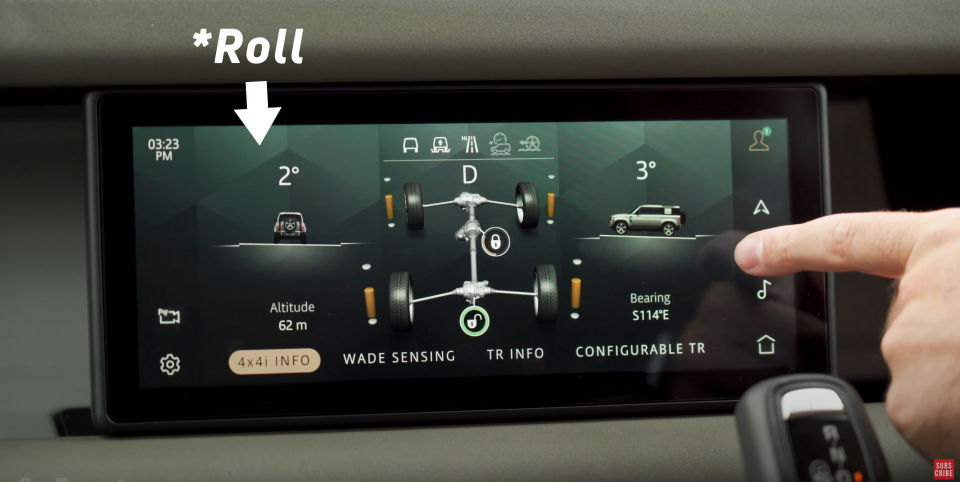
Not in this case. It would be easy to mistake the Defender for a Range Rover Sport behind the wheel given how agile and nimble it feels behind the wheel.
The steering is direct and offers ample communication, while the engine delivers impressive punch when it’s locked into its Sport mode.
Gear shifts are quick and throttle response is virtually lag free – it’s genuinely fun to drive.
But, what’s the Defender like off-road? In terms of off-road equipment, Defender comes with 218mm of ground clearance (increases to a maximum 291mm), 30.1-degree approach angle, 37.7-degree departure angle, and a 900mm wading depth.
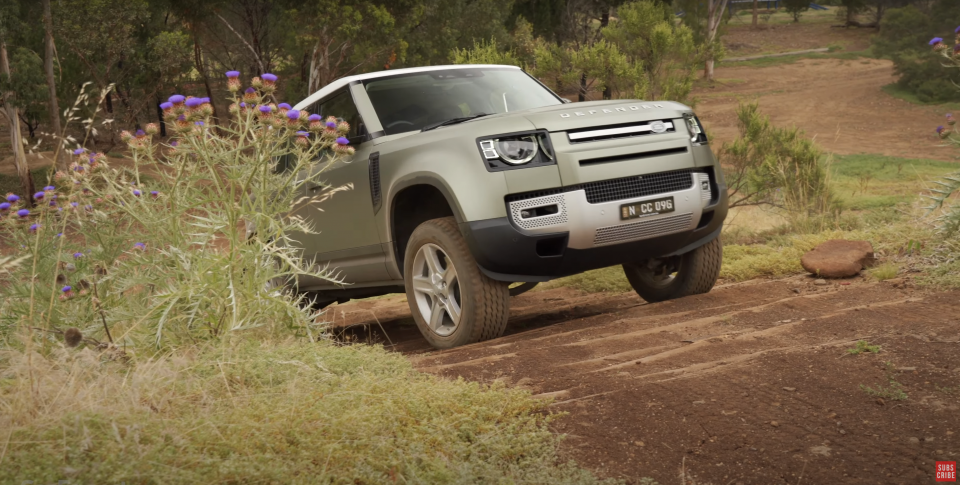
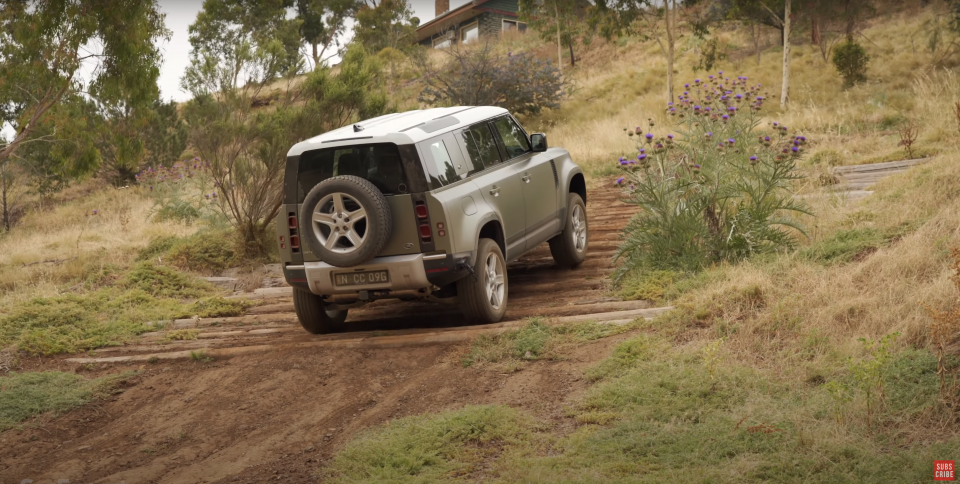
There’s also a centre locking differential as standard and our test vehicle was optioned with a rear locking differential. Also standard across the range is a low-range transfer case.
In terms of off-road credentials, they don’t get much better than those numbers. And that translates to the way it drives on the rough stuff.
A number of off-road modes are available to pick from that automatically tailor the off-road controls to suit the terrain. The vehicle is then able to gradually lock the centre and rear differentials depending on traction demands, too.
It’s also the first vehicle we’ve driven on our off-road course that doesn’t touch down over our rocky descent. For reference, 291mm of ground clearance is clear of even the most capable dual-cab utes on the market.
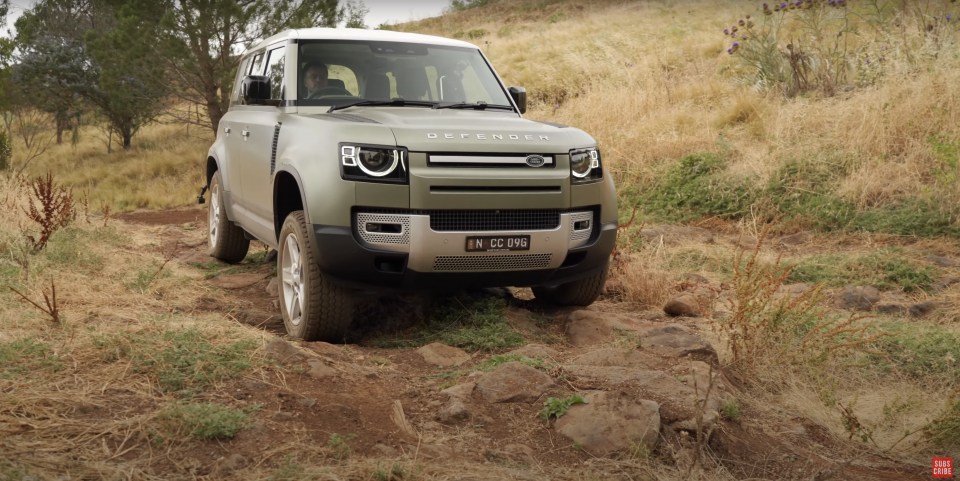
Land Rover has also engineered 500mm of wheel articulation, which allows further capability off-road thanks to the added traction afforded by not having a wheel leave the ground.
We tested the Defender across offset moguls, up an ascent covered in silty logs and down a descent covered in rocks. It took on each course with ease.
This light off-road course certainly didn’t test the Defender to its limits, but based on Tony’s more serious off-road jaunt, there’s little that will stop the Defender in its tracks.
The greatest take away from driving the Defender off-road is how easy everything is to operate.
A novice can get behind the wheel, press a few buttons and the Defender will be ready to tackle virtually anything you throw at it. It wasn’t quite so simple in the outgoing model.
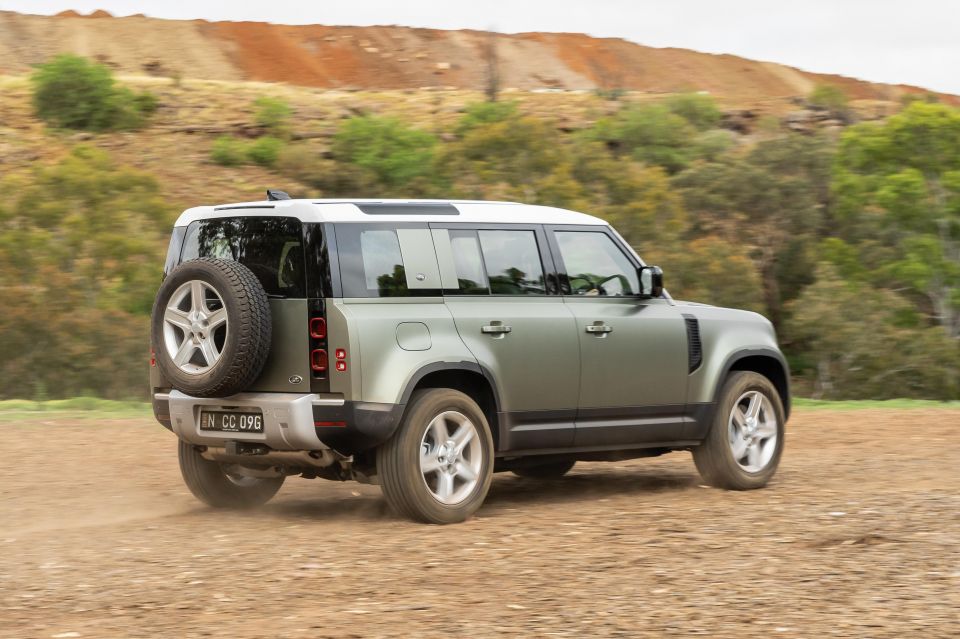
The Land Rover Defender requires servicing every 12 months or 20,000km (whichever occurs first).
It’s also covered by a three-year, unlimited-kilometre warranty normally, but is currently being sold with a five-year unlimited kilometre warranty.
While buyers can pay per service, Land Rover sells a prepaid service package that covers five years or 102,000km of servicing. It’s priced at $2650, an average of $530 per service.
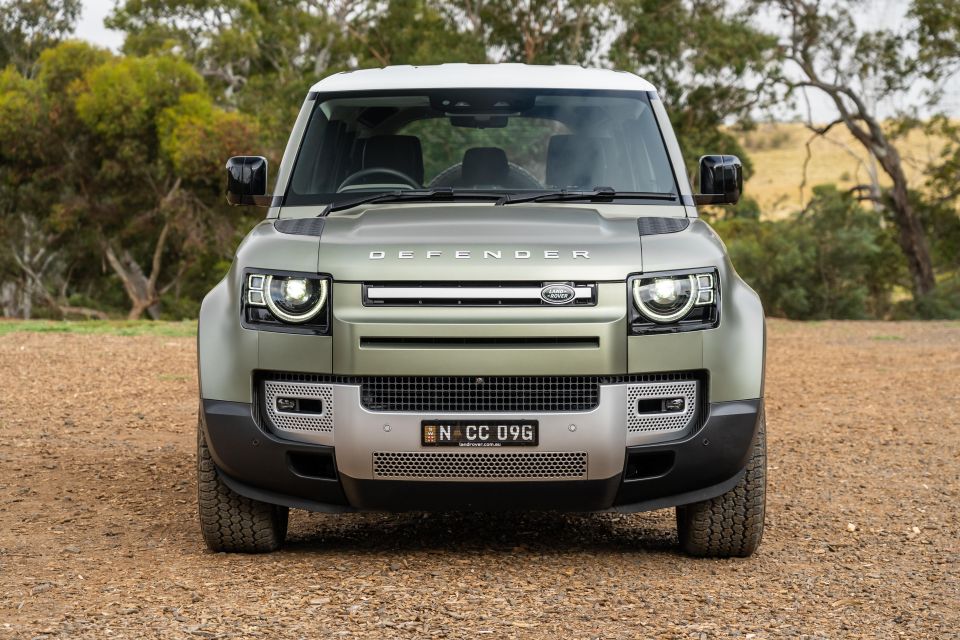
The Defender really is awesome. We don’t come across cars often that win us over so convincingly, and it’s a feeling felt unanimously across the team.
Yes, it’s miles away from the old Defender in terms of what the old Defender was. But, it by no means shames itself off-road and it makes up for the lack of on-road dynamics and everyday usability from the old car.
This vehicle will never be considered a replacement of the old Defender, but it will be considered a reinvention of the name. There’s no place it won’t go and while you’re testing that claim you’re going to get there in style, comfort and with handling prowess you wouldn’t expect from a car this size.
Land Rover has done a killer job with the Defender and I’m looking forward to seeing what this platform spawns. If they fit a V8 under the bonnet of the Defender, it’ll well and truly make my day.
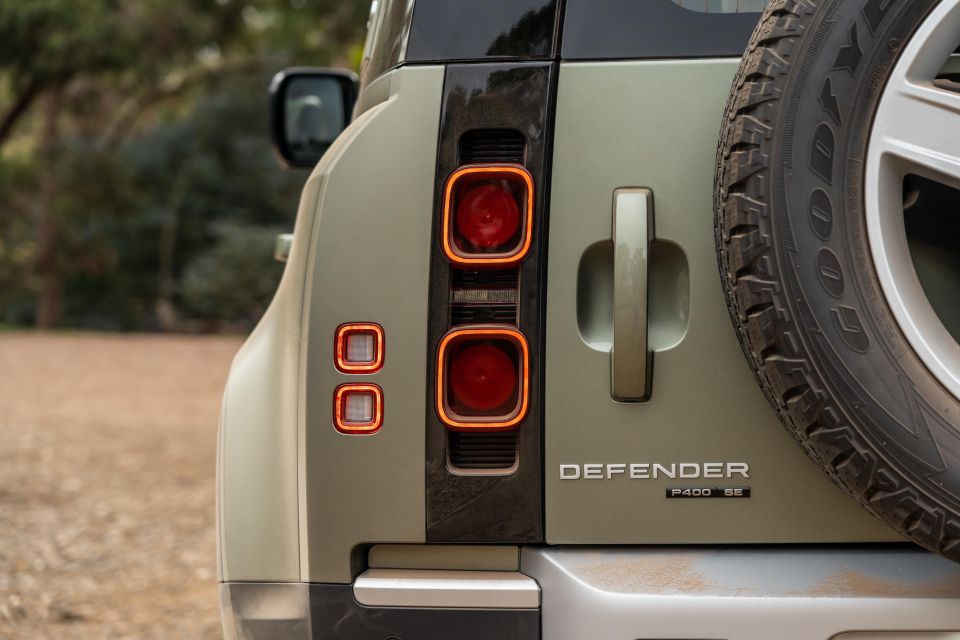
Click the images for the full gallery
MORE: Land Rover Defender news and reviews MORE: Everything Land Rover
Where expert car reviews meet expert car buying – CarExpert gives you trusted advice, personalised service and real savings on your next new car.
Paul Maric is a CarExpert co-founder and YouTube host, combining engineering expertise with two decades in automotive journalism.


Max Davies
7 Hours Ago


James Wong
2 Days Ago


CarExpert.com.au
10 Days Ago


Max Davies
11 Days Ago


William Stopford
12 Days Ago


CarExpert.com.au
16 Days Ago